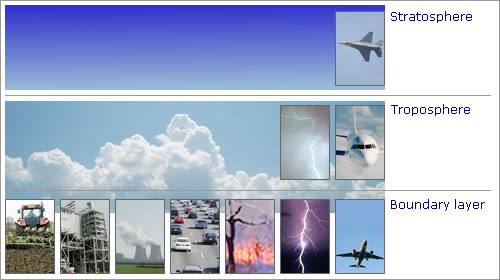With the exception of emissions by aircraft, the NOx produced by these activities is emitted into the boundary layer. Most of the NOx produced is ultimately converted to HNO3 and rained out of the atmosphere. However, thunderstorms, as well as making their own NOx contribution from lightning, can transport NOx from the boundary layer well into the troposphere.
The degree of NOx transfer from the boundary layer to the free troposphere is difficult to evaluate and model.
Aircraft inject NOx produced by high temperature combustion into the upper troposphere and lower stratosphere. Although the amount of NOx generated by aircraft is small compared to that generated at the ground by other anthropogenic activities, it is probably important because it is injected at a sensitive altitude where only a small fraction of the ground-level NOx is uplifted by convective storms. The significance of aircraft emissions of NOx for the troposphere may therefore be greater than its low absolute value might suggest.

Fig 1.1.2.1.1: Altitude of NOx emissions.
Image: AT2-ELS
Because the lifetime of NOx is short at the surface and much longer in the upper troposphere the altitude of the emission determines the lifetime of the NOx.
In the boundary layer about 60% of NOx is in the form of NO2. At higher altitudes, however, the proportion of NO to NO2 increases.